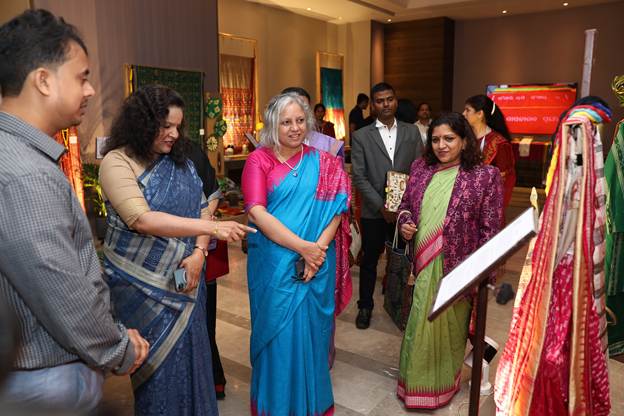Bhubaneswar: The National Conference on Handlooms & Handicrafts 2025 concluded today in Bhubaneswar, Odisha, with a strong commitment from the government to position India’s handmade sector as a core pillar of the nation’s ambitious Viksit Bharat 2047 vision.
The two-day conference, organised by the Offices of the Development Commissioner (Handlooms) and Development Commissioner (Handicrafts), Ministry of Textiles, brought together senior officials, policymakers, and sector experts from States and Union Territories to create a unified strategy for the growth of the handloom and handicraft industries.
Deliberations centered on shaping the framework of a forthcoming national scheme aimed at fostering deeper State participation, integrated governance, and sustainable sectoral development.
Chaired by Smt. Neelam Shami Rao, Secretary, Ministry of Textiles, the second day saw a strong emphasis on modernizing the sector. Smt. Rao urged the balance of traditional craftsmanship with modern tools to enhance productivity and reduce drudgery. She called on institutions like NIFT and IIHT to proactively forecast design and colour trends.
“Whether we call it handloom or handicraft, it should not be seen as a peripheral part of our economy—it is, in fact, the premium product of the future,” stated Smt. Rao.
To ensure continuous progress, the Secretary also announced that such conferences will be held every six months to facilitate cross-learning and review the progress of initiatives. She specifically highlighted the importance of inter-State coordination for the seamless movement of raw materials.
A major highlight was the presentation of the blueprint for the National Traditional Textile Mission (2026–31) by Dr. M. Beena, Development Commissioner (Handlooms). This mission-mode approach will emphasize cooperative federalism, skill and design upgradation, women-led development, cluster infrastructure, universal financial support for artisans, and innovation hubs for GI-linked branding.
Complementing this, Ms. Amrit Raj, Development Commissioner (Handicrafts), outlined governance reforms proposing a three-tier National-State-District model for decentralised, outcome-based implementation supported by strengthened digital governance and PMU-led impact monitoring.
Development Commissioner, Smt. Anu Garg, highlighted the cultural and ecological value of handlooms, citing products like Kotpad and Dongria Shawls as sustainable examples. She called for greater recognition of artisans, including name-tagging on products, youth training in market research, and announced plans for a Sustainability Cell and promotion of eco-textiles such as Katha Silk.
The conference was inaugurated on October 31 by Shri Manoj Ahuja, Chief Secretary, Government of Odisha. Alongside the main discussions, a Theme Pavilion showcasing Odisha’s rich heritage was curated, and delegates undertook a field visit to the Kala Bhoomi, Boyanika, and Utkalika showrooms.
The comprehensive two-day event concluded with a shared national resolve to create a cohesive, inclusive, and innovation-driven ecosystem for artisans and weavers, effectively balancing tradition with technology to meet the goals of Viksit Bharat 2047.


